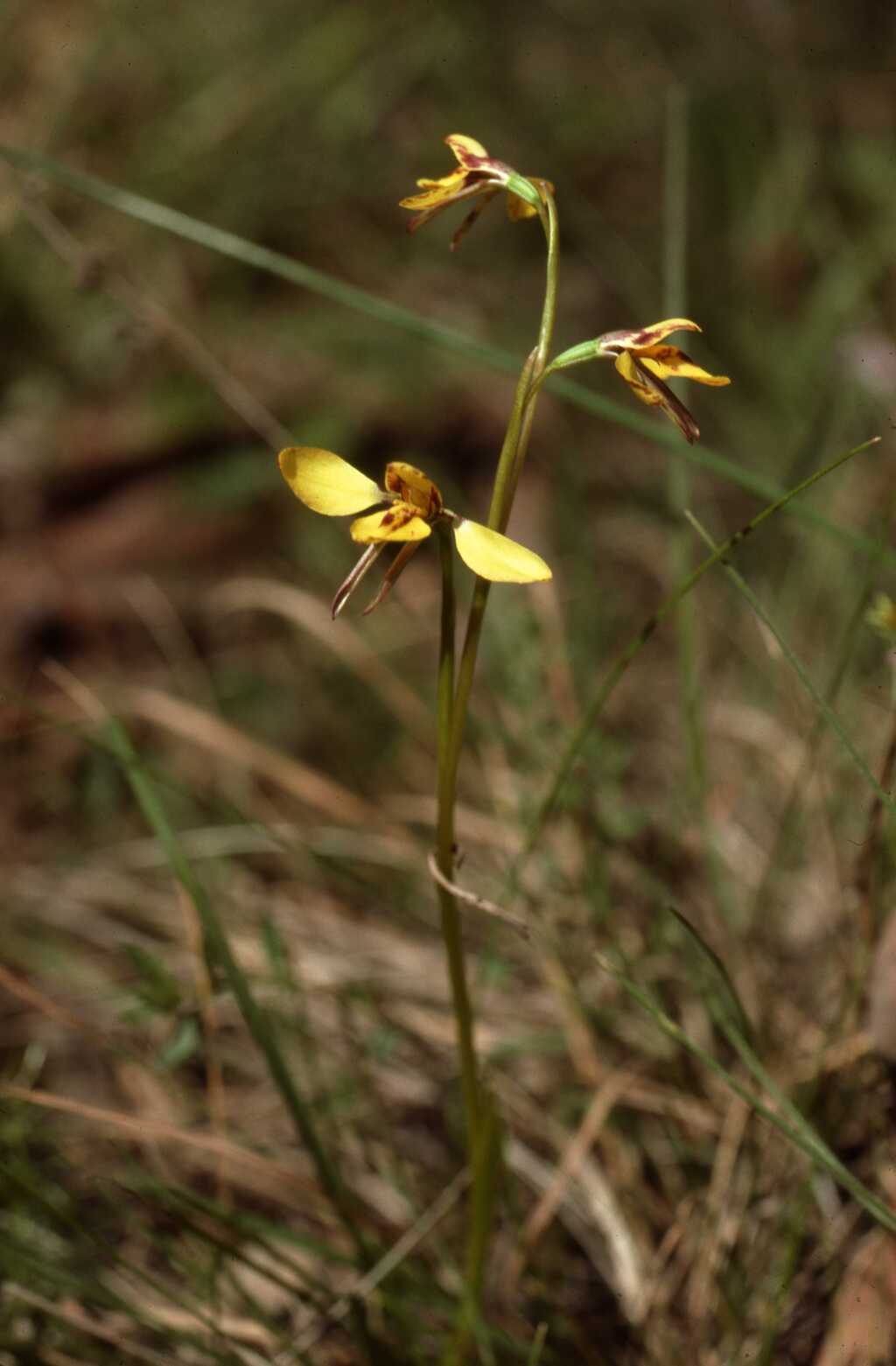Diuris chryseopsis
D.L.JonesFlowering plant slender, 12–40 cm tall. Leaves mostly 3–5, but up to 8, linear, channelled, 8–22 cm long, in a loose, erect tussock. Flowers 1–4, drooping, lemon-yellow with brown or greenish-brown markings on outer surface; pedicel (excluding ovary) 3–5.5 cm long, slender, partly enclosed within bract; dorsal sepal erect, broadly ovate, 14–16 mm long, much shorter than other perianth parts, yellow; lateral sepals obliquely deflexed, usually parallel, linear-lanceolate, 17–22 mm long, green; petals spreading or drooping, 15–20 mm long, claw green, lamina narrowly to broadly elliptic, yellow. Labellum obliquely deflexed, yellow, 15–18 mm long, 3-lobed; lateral lobes small, asymmetrically narrow-lanceolate, apical margins toothed; mid-lobe almost flat, c. 3 times as long as the lateral lobes, broadly ovate, narrowed at base, with 2 widely separated, pubescent, longitudinal ridges extending shortly beyond base, a single, less distinct ridge continuing c. halfway along lamina. Column wings about same height as anther. Flowers mostly Sep.–Nov.
MuM, Wim, GleP, VVP, VRiv, MuF, GipP, OtP, Gold, CVU, GGr, DunT, NIS, EGL, EGU, WPro, HSF, HNF, MonT, VAlp. Also SA, NSW, ACT, Tas. Often grows in damp depressions in grassland or open woodland communities in flat or undulating country.
The most widespread and common member of a complex of similar looking species including Diuris basaltica, D. fucosa, D. gregaria, D. monticola, D. ochroma, D. protena and D. subalpina.
Known to hybridise readily with several other sympatric Diuris species.
 Spinning
Spinning


